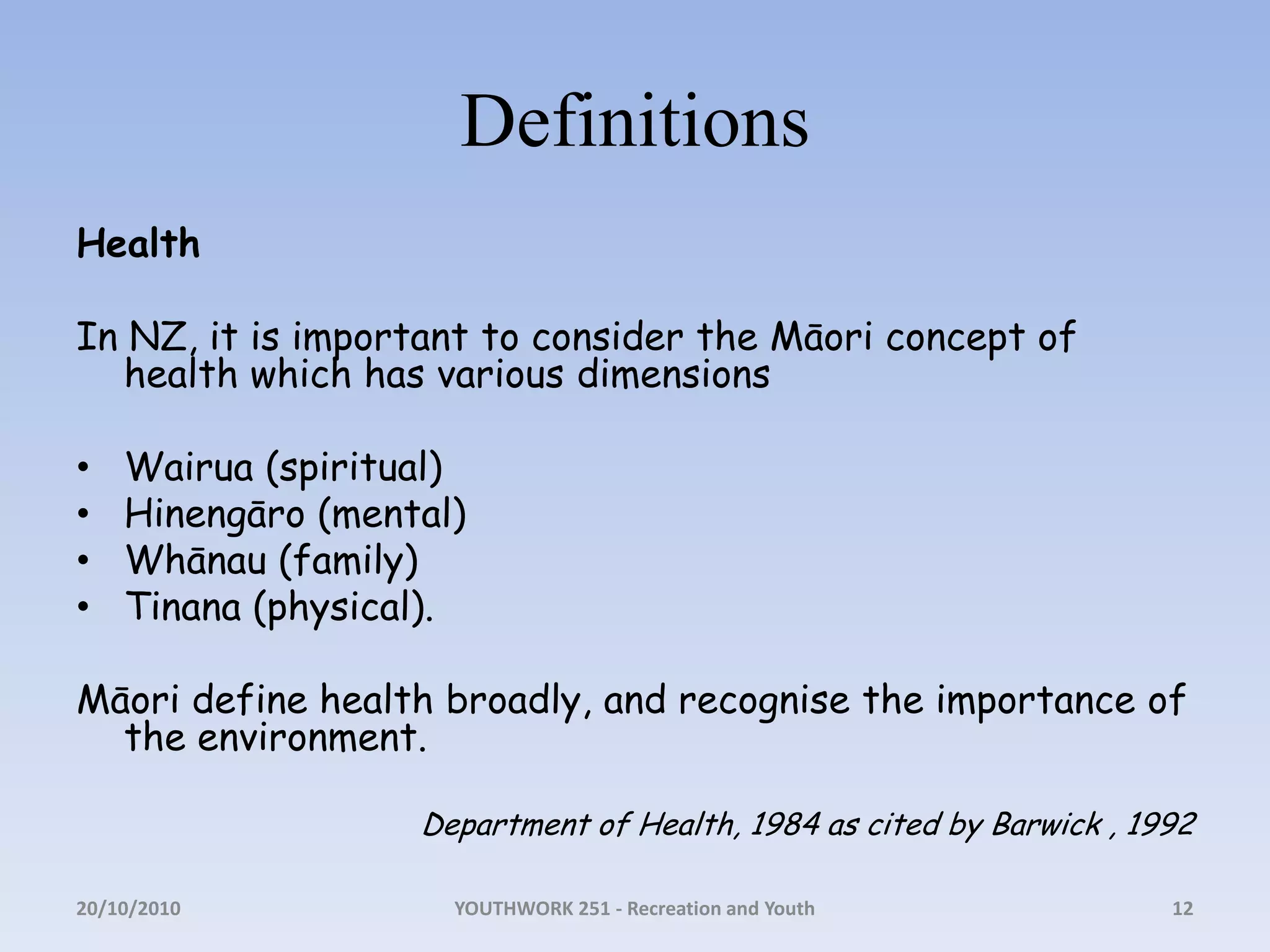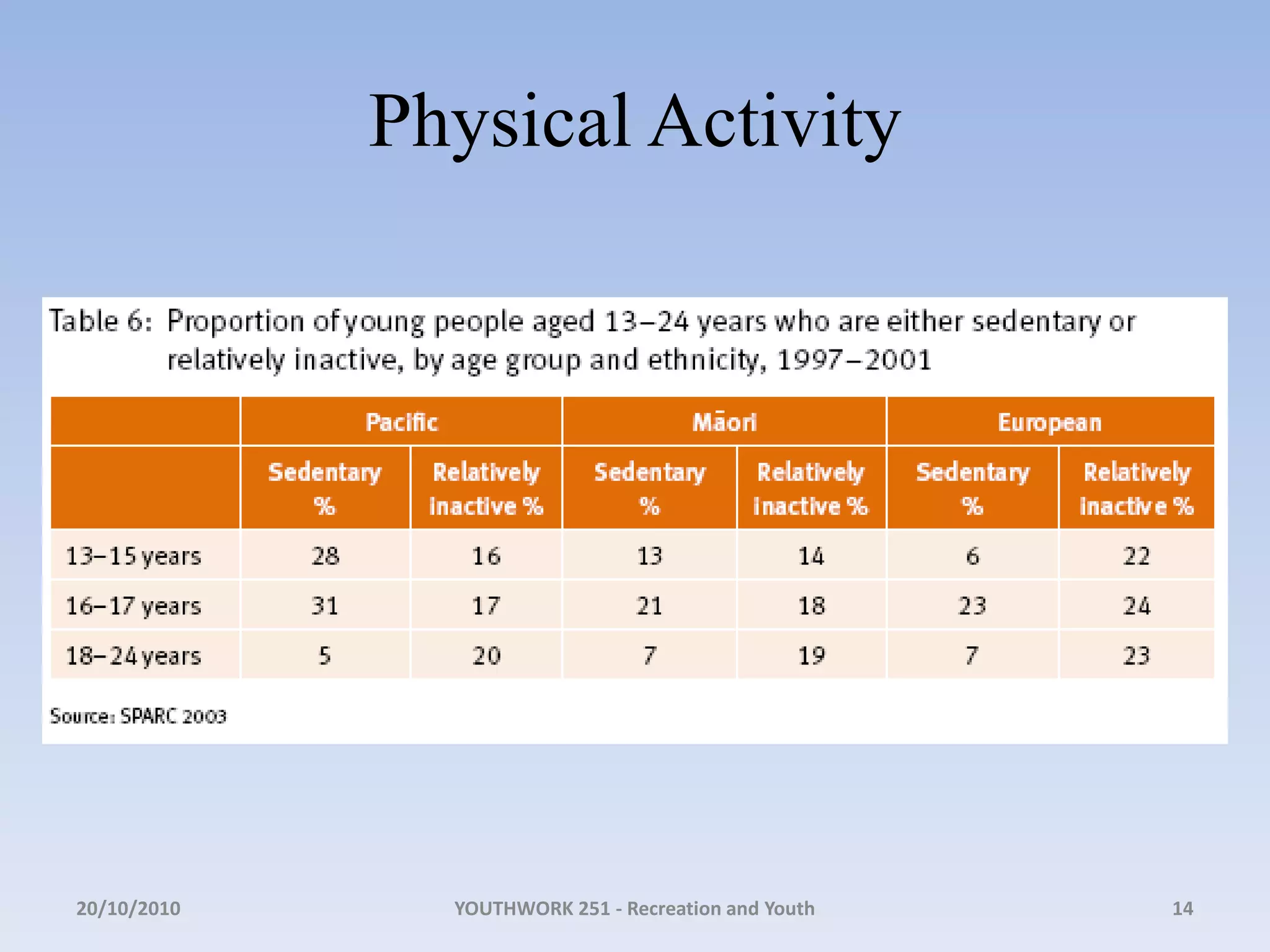This document discusses the relationship between socio-economic status and youth health. It defines key terms like youth, socio-economic status, income, education, health, and physical activity. Lower socio-economic status can negatively impact youth health through limited access to nutritious food, health information, and medical care due to lower income and education levels. Cultural factors also influence dietary behaviors for some youth. Overall, socio-economic status is an important determinant of youth health.















